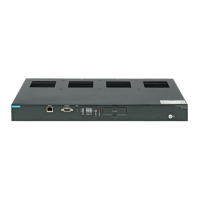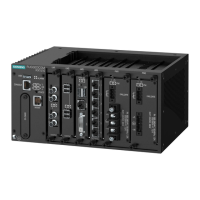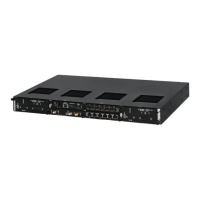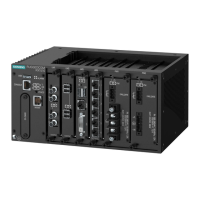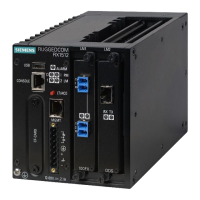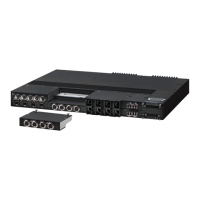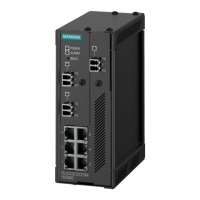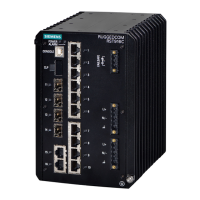RUGGEDCOM ROX II
User Guide
Chapter 5
Setup and Configuration
Managing IS-IS 407
the network's topology. The protocol computes the best path through the network (using Dijkstra's algorithm) and
then forwards packets to their destination along that path.
Although it was originally designed as an ISO Connectionless-mode Network Protocol (CLNP), it was later
adapted for IP network use (Dual IS-IS) in RFC 1195 [http://tools.ietf.org/html/rfc1195]. IS-IS is used primarily in
ISP environments and better suited to stringy networks as opposed to central core based networks.
IS-IS routers can be defined as Level-1, Level-2, or both. Level 1 routers form the area, while Level 2 routers
form the backbone of the network. By default, ROX II configures areas to be both (or Level-1-2). This allows the
device to inter-operate between different areas with minimal configuration.
• Level-1 routers are inter-area routers. They maintain a single Link-State Database (LSD) that only contains
information about the Level-1 and Level-2 neighbors in its area. To communicate with routers in another area,
Level-1 routers forward traffic through their closest Level-2 router.
• Level-2 routers are intra-area routers, meaning they can communicate with routers in other areas. They also
maintain a single LSD, but it only contains information about other Level-2 routers from the router's area or
other areas. The router knows nothing about the Level-1 routers in its area.
• Level-1-2 routers are both inter- and intra-area routers, meaning they can communicate with Level-1 and
Level-2 routers in any area. They maintain separate LSDs for Level-1 and Level-2 routers in and outside the
router's area.
IS-IS routers are identified by their Network Entity Title (NET) address, which is in Network Service Access Point
(NSAP) format (RFC 1237 [http://tools.ietf.org/html/rfc1237]). NSAP addresses range from 8 to 20 octets and
consist of the Authority and Format Identifier (1 byte), the Area ID (0 to 12 bytes), the System ID (6 bytes) and the
selector (1 byte).
The following is an example of an NSAP address:
NSAP address: 49.0001.1921.6800.1001.00
AFI: 49 (typical for IS-IS NET addresses)
Area ID: 0001 (typically 4 bytes)
System ID: 1921.6800.1001 (equates to the IP address 192.168.1.1)
Selector: 00 (NET addresses always have a selector of 00)
Before enabling IS-IS, note the following advantages and disadvantages:
IS-IS Advantages
• runs natively on the OSI network layer
• can support both IPv4 and IPv6 networks due to it's
independence from IP addressing
• IS-IS concept of areas is simpler to understand and
implement
• IS-IS updates grouped together and sent as one
LSP, rather than several small LSAs as with OSPF
• better scalability than OSPF due to a leaner daemon
with less overhead
• gaining popularity among service providers
• integrates with MPLS
• protects from spoofing and Denial of Service (DoS)
attacks due to use of the data link layer
IS-IS Disadvantages
• used mostly by service providers
• limited support by network stack vendors and
equipment makers
• CLNP addressing can be new and confusing to
many users
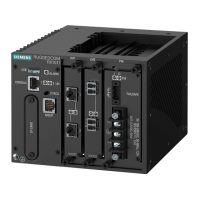
